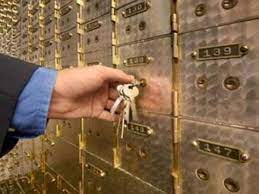The Reserve Bank of India modified the regulations governing lockers on January 1 to coincide with the start of the new year.
You must be knowing that several banks provide a locker facility to their customers. Bank lockers can be used to store property documents, jewellery, loan documents, savings Bonds, insurance policies, and other confidential items that need safekeeping. Depending on the size of the locker and the centre where the branch is located, the bank will charge an annual rent for the service.
Read More: Discover benefits of credit card rewards programs: How they work and how to make the most of them
The Reserve Bank of India modified the regulations governing lockers on January 1 to coincide with the start of the new year. Following the adoption of this regulation, banks will be unable to treat consumers arbitrarily when it comes to lockers. Keeping these new regulations in mind, let us get to know how the locker facility works.
How do you get the locker facility?
You will have to give an application to the branch where you want to open the locker. The locker facility is provided on a first come first serve basis. If your name is on the waiting list, you will be eligible once a user has left the locker. For this, it is also necessary to have a minimum amount in the bank account and the annual rent is charged from the account.
Read More: RBI Allows 6 Entities to Test Fintech Products to Deal with Financial Frauds Under Sandbox Scheme
What is the charge?
Depending on the size and location of the locker, its annual charges are also fixed. It also differs from bank to bank. The charge for a bank locker in SBI ranges from Rs 2,000 to Rs 12,000. Punjab National Bank charges from Rs 1250 to Rs 10,000 for a bank locker. This charge in Canara Bank ranges from Rs 2000 to Rs 10000. In HDFC, this charge ranges from Rs 3,000 to Rs 20000. In ICICI Bank, the charge ranges between Rs 1200 and goes up to Rs 5000.
Under what conditions does the bank give compensation?
According to the new RBI regulations, the bank would be responsible for any damages to the contents of the locker caused by its negligence. The banks are in charge of taking all necessary precautions to ensure the security of the location where the safe deposit vaults are maintained. If the loss is due to fraud committed by the bank’s employees, the bank’s liability will be up to 100 times the annual rent of the locker.





































